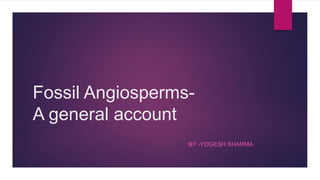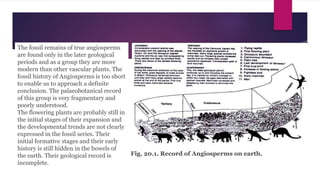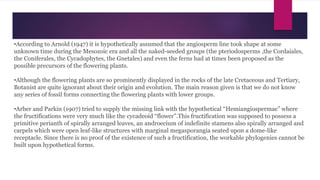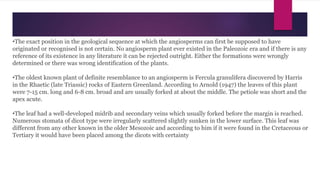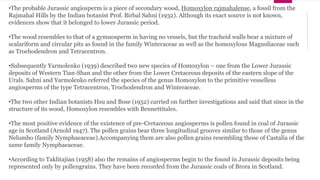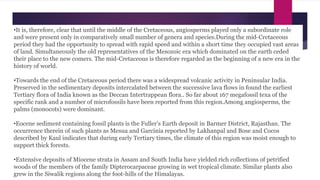1. The fossil record of flowering plants is fragmentary and poorly understood as their remains are only found in later geological periods.
2. Early angiosperms first appeared in the Jurassic period based on pollen and plant fossils that showed angiosperm characteristics, but they did not become dominant until the Cretaceous period.
3. By the mid-Cretaceous, angiosperms expanded rapidly and came to dominate plant communities worldwide, replacing gymnosperms and other plant groups that previously dominated.
